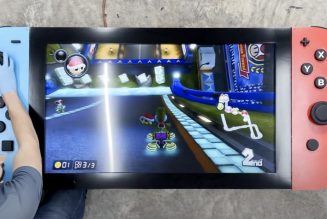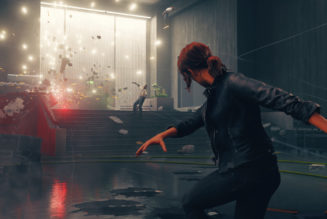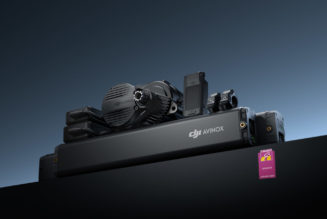I was unreasonably excited to play the follow-up to PC Building Simulator. The original game taught me the finer points of building a PC and married the technical aspects with all the logistical drudgery of running your own business. Unfortunately, PC Building Simulator 2 doubles down on some of the more bothersome aspects while only adding a small handful of shallow features.
%2Fcdn.vox-cdn.com%2Fuploads%2Fchorus_asset%2Ffile%2F24139203%2FScreenshot_2022_10_20_183441.jpg&w=2400&q=75)
As with many simulator games, PCBS2 is about appreciating the mundane. Ordinary people don’t obsess over the differences between an NVMe SSD or a 2.5-inch hard drive or fine-tuning the voltage on a GPU, but these are the details that PC-building enthusiasts crave.
Like the original game, PCBS2 has you taking charge of a run-down computer repair shop. You start with a small sum of money and a handful of jobs delivered via email. If you haven’t played the original game, PCBS2 might seem a bit surreal, as you need to walk your character over to an in-game computer to access your email and other applications. Thankfully a helpful tutorial walks you through the process step-by-step.
Each tutorial explains the finer points of running your business by slowly doling out more complicated jobs as you gain more experience. The tutorial will walk you through what to do whenever you encounter a specific job for the first time. Unfortunately, there’s no way to easily revisit these tutorials if you’ve forgotten how to do something.
%2Fcdn.vox-cdn.com%2Fuploads%2Fchorus_asset%2Ffile%2F24138902%2FScreenshot_2022_10_20_181442.jpg&w=2400&q=75)
The jobs you take on range from cleaning the dust out of old PCs to overclocking CPUs or building desktops from scratch while keeping within your client’s budget. Eventually, just like the original game, the jobs soon become a practice in reading comprehension. Buried in each email, you’ll find optional requests that, when satisfied, net you access to higher-tier jobs. It’s just unfortunate that there isn’t more variety in the objectives, which are very similar to what we saw in the original PCBS. Some additional objectives are attached to customizing a client’s PCs with different decals and paint jobs or utilizing new components, but PCBS2 doesn’t add too many new wrinkles to the jobs seen in the original.
%2Fcdn.vox-cdn.com%2Fuploads%2Fchorus_asset%2Ffile%2F24139129%2FScreenshot_2022_09_29_181922.jpg&w=2400&q=75)
Customization is perhaps the biggest addition to PCBS2, letting you transform any desktop into an aesthetically offensive gaming icon. You can apply layered combinations of vinyl skins, individual stickers, and spray paint to any PC. The customization tools are clumsy, and while you’ll unlock new vinyl wraps and decals as you level up, there’s currently no way to use any custom assets, which is disappointing.
The customization features also extend to your workshop. The original game allowed you to personalize your office space, but you can get more granular this time, with the ability to swap out desk designs, decor, walls, and floors. There aren’t many personalization options, but this feature is a nice touch. While you can’t gut renovate your office, you have far more flexibility with your workspace this time around, functionally and aesthetically.
%2Fcdn.vox-cdn.com%2Fuploads%2Fchorus_asset%2Ffile%2F24139122%2FScreenshot_2022_10_25_113328.jpg&w=2400&q=75)
Once you’ve set up your workspace, you naturally have to build some PCs. Thankfully, PCBS2 ships with an impressive list of contemporary PC components ranging from GPUs to water cooling blocks and cases. Most of the components are from popular manufacturers and are virtually identical to the real-world counterparts made by NZXT, MSI, and Cooler Master. In the past, PCBS has done an excellent job keeping parts lists up to date with free updates, which isn’t a simple task, considering we’ve seen a host of new hardware from Nvidia and AMD, not to mention Intel’s new ARC graphics cards.
%2Fcdn.vox-cdn.com%2Fuploads%2Fchorus_asset%2Ffile%2F24139297%2FScreenshot_2022_10_25_113355.jpg&w=2400&q=75)
One of the other standout features that changes how you interact with hardware is the introduction of fitting custom water-cooling blocks to your motherboard, RAM or GPU. Getting into some of the more technical aspects is the right move for PCBS2, and de-lidding CPUs is a feature that’s apparently on the roadmap.
It’s clear that the developers are taking steps to streamline the overall experience of PCBS2. Some of the quality-of-life features instituted with the original game make a welcome return, namely the tablet system, which lets you access most of the functions that originally required you to run back to your office PC. Some other clever additions include linking purchased parts with your in-progress jobs, which comes in handy when juggling several open projects. Some new features specific to PCBS2 include a thermal imaging app that allows you to troubleshoot particular components and an in-game RAM voltage calculator for overclocking memory.
%2Fcdn.vox-cdn.com%2Fuploads%2Fchorus_asset%2Ffile%2F24138956%2FScreenshot_2022_10_20_171845.jpg&w=2400&q=75)
However, considering how much time you spend in menus with PCBS2, they should be more intuitive. It’s a little confusing because many of the in-game apps you use mirror their real-world counterparts but lack any of the usability features you’d expect. Imagine navigating your desktop without the ability to resize windows or use any of the shortcuts you’re accustomed to; that’s what it feels like in PCBS2.
None of this is helped by the fact that PCBS2 is remarkably buggy. On several occasions, I encountered jobs that I couldn’t complete. Graphical glitches are less common, but I did run into instances of levitating hardware or components clipping through objects. The most irritating, however, was a bug that made it impossible to interact with the game’s on-screen GUI. A good portion of your jobs require installing apps or modifying the BIOS on a given machine, which is impossible if you can’t interact with the screen.
%2Fcdn.vox-cdn.com%2Fuploads%2Fchorus_asset%2Ffile%2F24139235%2FScreenshot_2022_10_25_113412.jpg&w=2400&q=75)
Even with its myriad of bugs, PCBS2 shares the same addictive qualities as its predecessor that had me saying, “just one more job”. However, there currently isn’t enough content to keep me coming back. There is a rudimentary achievement system in place, but there isn’t enough of a metagame to keep you invested for very long. The original game had a modest endgame goal of cultivating enough capital to secure ownership of your shop. Right now, there isn’t much to keep you playing over the long term other than leveling up to unlock new parts by completing progressively more complicated jobs.
Right now, the game doesn’t add enough or do things differently enough to warrant a “2” However, given how much the original PCBS has changed since its launch, I’m excited to see where PCBS will be in a year or so. But now, PCBS2 seems more interested in testing the waters with a handful of shallow features rather than diving headfirst into a single one.
PCBS2 didn’t get its hooks in me the same way as the original, but despite its bugs and overall lack of content, I can’t overlook the game’s potential as an excellent educational tool. Before playing the original PCBS, I’d never built a computer. But playing over time gave me the confidence to build several real-world desktops. And while I’m not going to be water-cooling my GPU or motherboard any time soon, PCBS2 has certainly piqued my curiosity.
PC Building Simulator 2 launched on October 12th on PC through the Epic Games Store.









